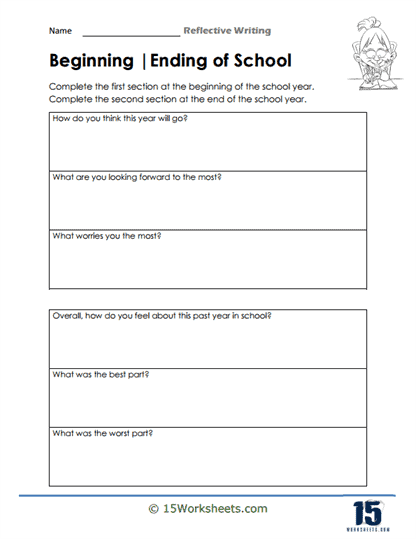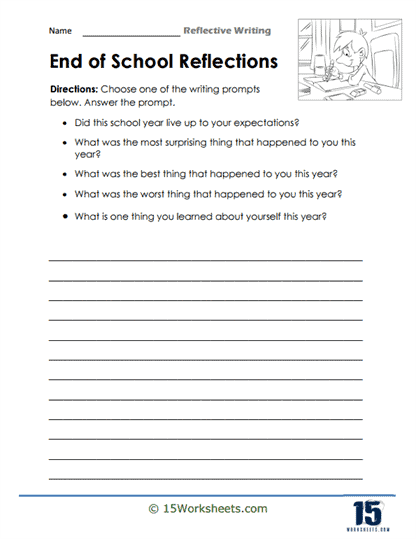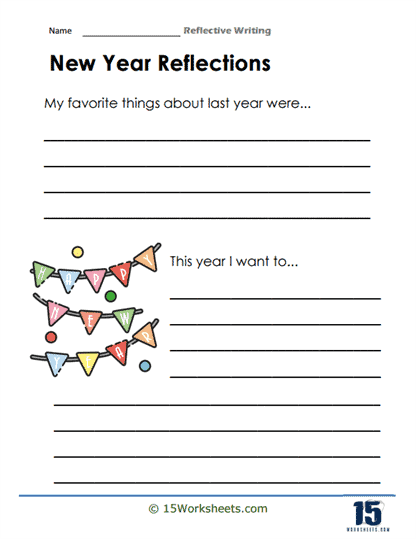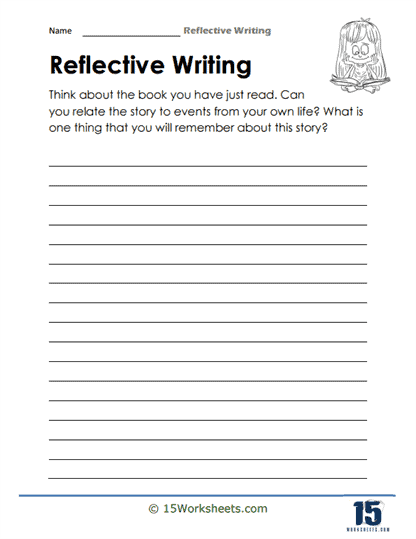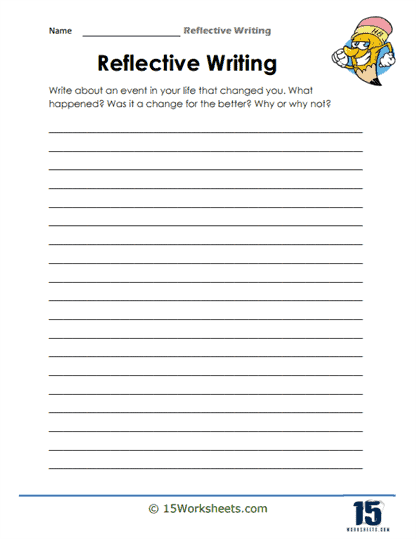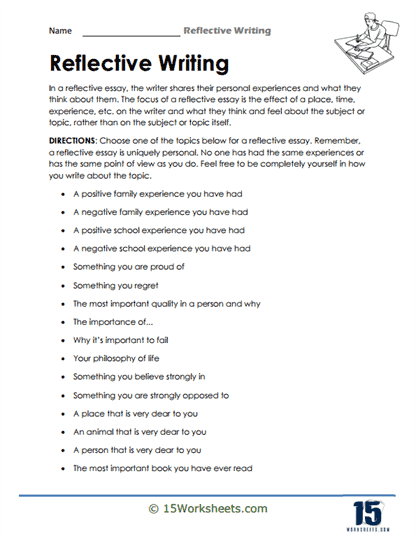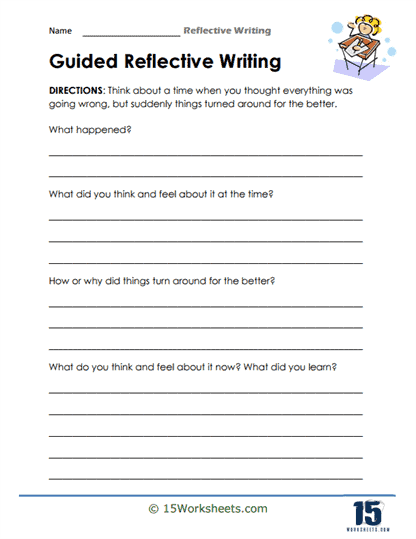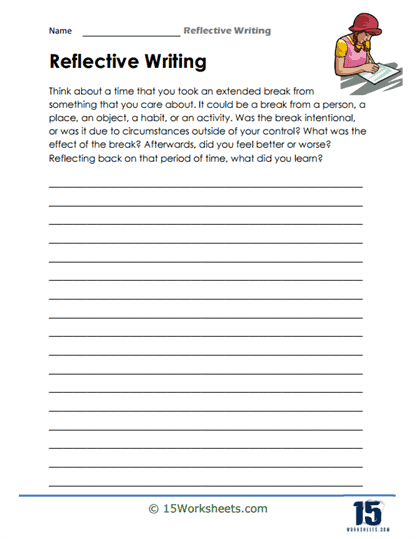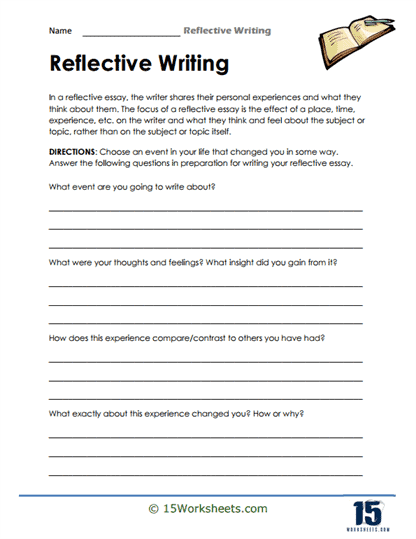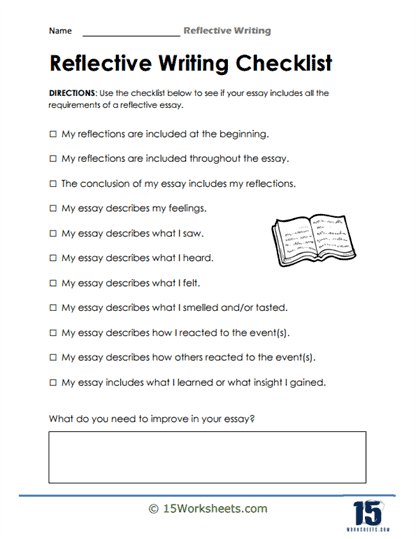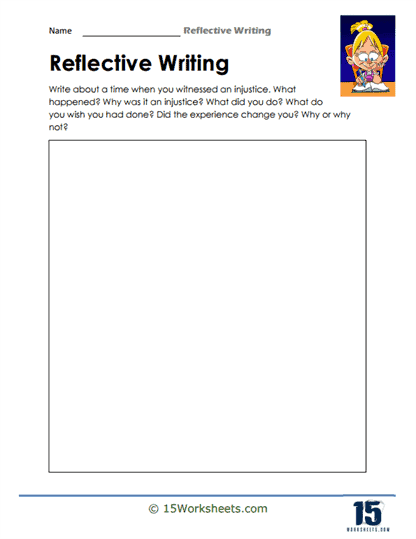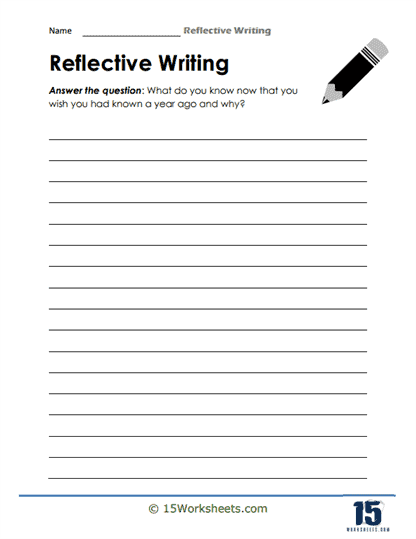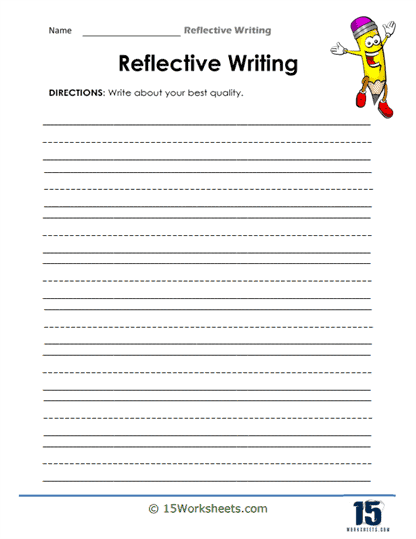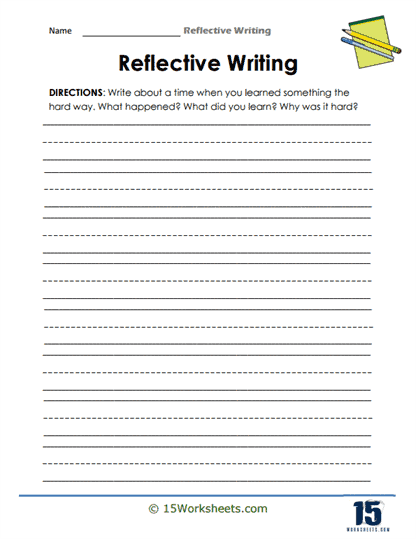Reflective Writing Worksheets
All About These 15 Worksheets
This series of 15 worksheets is a transformative resource designed to guide students on a journey of self-reflection, introspection, and personal growth through the power of writing. These worksheets provide students with a structured framework to explore their thoughts, feelings, and experiences, enabling them to develop self-awareness, gain valuable insights, and express their reflections in a meaningful and introspective manner.
The exercises offer a variety of prompts and are designed to engage students in reflective writing. These activities encourage students to contemplate their past experiences, analyze their emotions and thoughts, evaluate their personal growth, and make connections between their experiences and the world around them. Through these worksheets, students will:
- Consider specific aspects of their experiences, such as their thoughts, emotions, actions, and lessons learned;
- Engage readers by creating vivid descriptions as they retell their own experiences that convey their reflections effectively;
- And be encouraged to evaluate their reflective writing and provide constructive feedback to themselves.
This series is suitable for students across different grade levels and can be incorporated into language arts classes, creative writing workshops, or personal development activities. By using these worksheets, teachers provide their students with a powerful tool for self-expression, self-discovery, and personal growth.
Through the writing prompts in this series, students develop strong writing skills, critical thinking abilities, and self-awareness. These worksheets also empower students to reflect on their experiences, gain valuable insights, and express themselves authentically. In summary, this Reflective Writing worksheets series fosters personal growth, emotional intelligence, and the ability to articulate thoughts and reflections in a way that resonates with both the writer and the reader.
How to Write a Reflective Essay
At some point in your college career, you’ll likely be asked to write an essay that requires reflection. Reflective essays are exactly what they sound like – they require the student to reflect on the past, present or future and make judgments based on personal experience and opinion.
The process of writing a reflective essay can be daunting, especially if you are not used to thinking critically about your own experiences. However, the rewards of reflectively writing an essay are well worth the effort. A reflective essay allows you to step back and consider your life and what you have learned from your experiences. It can help you gain insights into yourself and others and also serve as a catalyst for positive personal growth.
While reflective essays might seem intimidating if you’ve never written one before, this step-by-step guide will help you organize your thoughts and communicate them effectively to readers.
The First Step – Choose Your Topic
The first step in writing an essay is deciding your topic.
Ask yourself: What do I want to write about? What do I feel strongly about? What are my views on certain subjects or issues? The point of a reflective essay is that you write from your perspective, so your choice of topic will be extremely important.
In addition, because you have to refer back to your experiences and opinions as you progress through writing an essay, it’s imperative that your topic be something that interests you and that you feel passionate about.
Remember – there’s no right or wrong answer when picking out a topic!
The Second Step – Organize Your Thoughts
Once you’ve decided what topic or topics most affect or interest you, narrow it down into three different arguments. Then take out an example sheet of paper and write each argument on its page, outlining as much detail as possible.
You’re not writing anything just yet; all you’re doing right now is jotting down notes and getting your ideas down on paper. This can be done in any way you like, whether it’s an essay planner, mind map or bullet point list.
But make sure you have a general structure for your essay covering all its key elements, as it will make it easier for you to create and develop your draft.
The Third Step – Write the Draft of Your Essay
The third step is drafting your reflective essay.
Many students struggle with this stage, but it doesn’t have to be difficult. The goal of your draft is simply to write down everything you can remember about your experience relevant to your topic and add any details or side notes that occur to you during drafting. This may sound easy, but many people find it challenging to know what they should include and exclude.
The Fourth Step – Revise the Draft
Once you’ve written your draft, take some time away from it and come back fresh. Now, try and read your essay through another person’s eyes. If you can give it to somebody else (who will not be shy about criticizing you!), that is even better.
Take note of any spelling errors or places where things are unclear. Don’t let all those extra words creep into your work – cut out unnecessary clauses and phrases!
The Fifth Step – Proofread and Edit Your Essay
Any good writer knows that the final step to writing an excellent essay is taking the time to proofread and edit your work. This means carefully checking for grammar and spelling errors and ensuring that your argument flows smoothly. It can also be helpful to read your essay aloud, as this can help you to spot any awkward phrasing or unclear sentences.
Proofreading and editing are essential to essay writing, so treat them as such.

